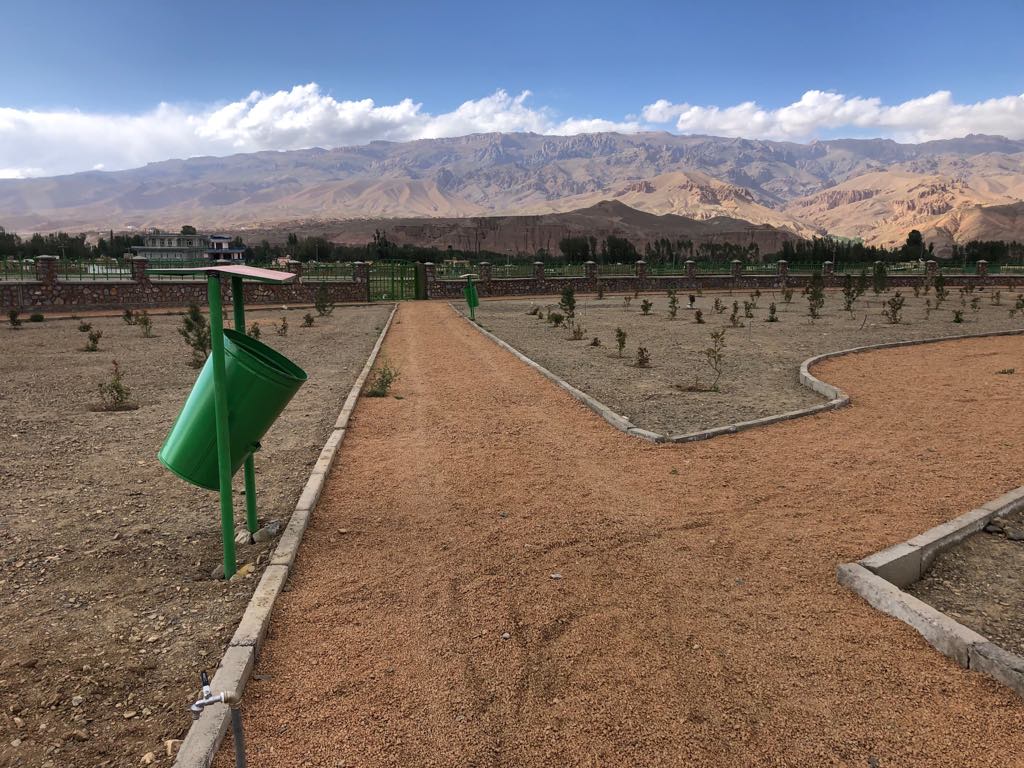Bamyan, 03 July 2019. The city of Bamyan recently opened two green public recreational areas called the Childrens Park and the Welayat Park. Both parks are already used by a wide variety of residents throughout the day. Children are in the playgrounds, after school high school students are on the volley ball courts, women gather in the evenings with their families, and elders and senior community members enjoy chit chatting in the evenings in the peaceful space.
These public parks are are the perfect antidote to Afghanistan’s rapid and unplanned urbanization, and the new public spaces are changing the social and cultural trends of the citizens, building social cohesion among families and neighbors. Lack of public spaces and green parks in urban areas negatively impacts on the quality of daily life for city residents all over the world. It is also dangerous for children as many end up playing in the streets. Creating public spaces that are safe, inclusive and accessible for local residents is a key aspect of good urban planning and design.
The Municipality of Bamiyan partnered with UN-Habitat, the UN focal point for sustainable urbanization, to promote green and clean spaces for their residents. As part of the Clean and Green Cities (CGC) programme funded by the European Union and USAID, this initiative has contributed to the construction of more than 49 parks in 12 Afghan cities.
At the opening of one of the parks Mr. Mohamed Ewaz, Community Elder of District 1 of Bamyan (the Gurdana ye Bala District/upper Gurdana), reflected that, “The new park has changed the lives and dynamics of our children. They now have space where to play and enjoy. They have a green area and a playground for children.”
The Clean and Green Cities Programme (CGC) contributed to the physical upgrading of the city and also provided jobs for the residents. Both parks were built by local unemployed neighbors, including women. They were hired to clean the city, plant the trees, build the parks as well as construct a drainage system for the entire district.
The acting Mayor of Bamiyan noted how the parks “Improved basic services and increased trust between the Municipality and the citizens.” He added that thanks to the new installations, “Citizens are now willing to pay their property fee, safayi, that has increased the contribution ten fold.”
Mr. Abdullah Mahmoodi, a resident of Bamyan, explained us how “these new parks are also an effective way to stop illegal land grabbing activities which are very common in our culture”. Land grabbing is a regular illegal practice largely found in Afghanistan. Indeed, the provision of these public spaces guarantees the use of the land by community members for recreational, sports or educational use.
In addition to these two CGC parks, the city will provide two additional parks in the same district. The two remaining parks are also assisted by UN-Habitat as part of the City for All Programme (funded by USAID and the EU) and by the Afghanistan Urban Peacebuilding Programme (AUPP), funded by the Government of the Kingdom of the Netherlands and the Swiss Agency for Development and Cooperation (SDC).

Article: Koussay Boulaich
Banner photo: UN-Habitat/Ahsan Saadat